 W
WThomas Anstis was an early 18th-century pirate, who served under Captain Howell Davis and Captain Bartholomew Roberts, before setting up on his own account, raiding shipping on the eastern coast of the American colonies and in the Caribbean during what is often referred to as the "Golden Age of Piracy".
 W
WJohn Auger was a pirate active in the Bahamas around 1718. He is primarily remembered for being captured by pirate turned pirate-hunter Benjamin Hornigold.
 W
WCharles Bellamy was an English pirate who raided colonial American shipping in New England and later off the coast of Canada. He is often confused with the more well-known Samuel "Black Sam" Bellamy, as they operated in the same areas at the same time.
 W
WCaptain Samuel Bellamy, later known as "Black Sam" Bellamy, was an English pirate who operated in the early 18th century. He is best known as the wealthiest pirate in recorded history, and one of the faces of the Golden Age of Piracy. Though his known career as a pirate captain lasted little more than a year, he and his crew captured at least 53 ships. Called "Black Sam" in Cape Cod folklore because he eschewed the fashionable powdered wig in favor of tying back his long black hair with a simple band, Bellamy became known for his mercy and generosity toward those he captured on his raids. This reputation earned him another nickname, the "Prince of Pirates". He likened himself to Robin Hood, with his crew calling themselves "Robin Hood's Men".
 W
WEdward Teach, better known as Blackbeard, was an English pirate who operated around the West Indies and the eastern coast of Britain's North American colonies. Little is known about his early life, but he may have been a sailor on privateer ships during Queen Anne's War before he settled on the Bahamian island of New Providence, a base for Captain Benjamin Hornigold, whose crew Teach joined around 1716. Hornigold placed him in command of a sloop that he had captured, and the two engaged in numerous acts of piracy. Their numbers were boosted by the addition to their fleet of two more ships, one of which was commanded by Stede Bonnet; but Hornigold retired from piracy toward the end of 1717, taking two vessels with him.
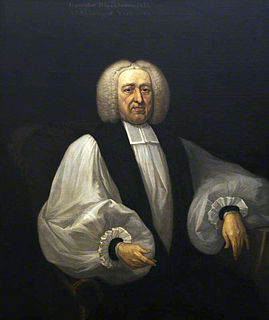 W
WLancelot Blackburne was an English clergyman, who became Archbishop of York, and – in popular belief – a pirate.
 W
WStede Bonnet was an early eighteenth-century Barbadian pirate, sometimes called "The Gentleman Pirate" because he was a moderately wealthy land-owner before turning to a life of crime. Bonnet was born into a wealthy English family on the island of Barbados, and inherited the family estate after his father's death in 1694. In 1709, he married Mary Allamby, and engaged in some level of militia service. Because of marital problems, and despite his lack of sailing experience, Bonnet decided he should turn to piracy in the summer of 1717. He bought a sailing vessel, named it Revenge, and travelled with his paid crew along the Eastern Seaboard of what is now the United States, capturing other vessels and burning other Barbadian ships.
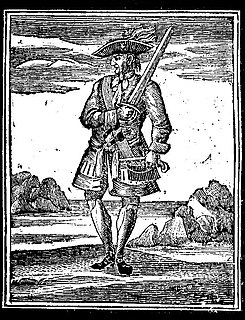 W
WJohn Rackham, commonly known as Calico Jack, was an English pirate captain operating in the Bahamas and in Cuba during the early 18th century. His nickname was derived from the calico clothing that he wore, while Jack is a nickname for "John".
 W
WChristopher Condent, born in Plymouth in Devon, was an English pirate who led the return to the Eastern Seas.
 W
WRobert Deal was a pirate active in the Caribbean. He is best known for his association with Charles Vane.
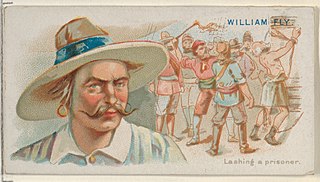 W
WCaptain William Fly was an English pirate who raided New England shipping fleets for three months in 1726 until he was captured by the crew of a seized ship. He was hanged in Boston, Massachusetts and his body publicly exhibited as a warning to other pirates. His death is considered by many to mark the end of the Golden Age of Piracy.
 W
WJohn Halsey was a British privateer and a later pirate who was active in the Atlantic and Indian Oceans during the early 18th century. Although much of his life and career is unknown, he is recorded in A General History of the Pyrates which states "He was brave in his Person, courteous to all his Prisoners, lived beloved, and died regretted by his own People. His Grave was made in a garden of watermelons, and fenced in with Palisades to prevent his being rooted up by wild Hogs."
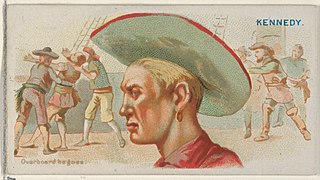 W
WWalter Kennedy was an English pirate who served as a crew member under Howell Davis and Bartholomew Roberts.
 W
WJohn Leadstone was a pirate and slaver active off the west coast of Africa. Often called “Captain Crackers” or “Old Captain Cracker,” he is best known for his actions against the English Royal African Company and for his brief involvement with Bartholomew Roberts.
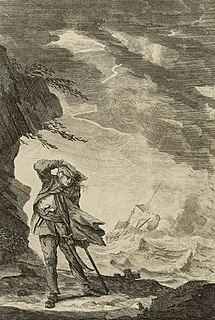 W
WEdward "Ned" Low was a notorious pirate of English origin during the latter days of the Golden Age of Piracy, in the early 18th century. Low was born into poverty in Westminster, London, and was a thief from an early age. He moved to Boston, Massachusetts, as a young man. His wife died in childbirth in late 1719. Two years later, he became a pirate, operating off the coasts of New England and the Azores, and in the Caribbean.
 W
WGeorge Lowther was an 18th-century English pirate who, although little is known of his life, was active in the Caribbean and Atlantic. His First Mate was Edward Low.
 W
WJohn Martel was a French pirate active in the Caribbean.
 W
WJohn Phillips was an English pirate captain. He started his piratical career in 1721 under Thomas Anstis, and stole his own pirate vessel in 1723. He died in a surprise attack by his own prisoners. He is noted for the articles of his ship, the Revenge, one of only four complete sets of pirate articles to survive from the so-called Golden Age of Piracy.
 W
WJames Plaintain was a pirate active in the Indian Ocean. He is best known for using his pirate wealth to found a short-lived kingdom on Madagascar.
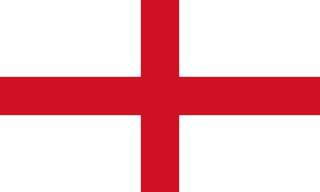 W
WJohn Quelch was an English pirate who had a lucrative but very brief career of about one year. His chief claim to historical significance is that he was the first person to be tried for piracy outside England under Admiralty Law and thus without a jury. These Admiralty courts had been instituted to tackle the rise of piracy in colonial ports where civil and criminal courts had proved ineffective.
 W
WMary Read, also known as Mark Read, was an English pirate. She and Anne Bonny are two of the most famed female pirates of all time, and among the few women known to have been convicted of piracy during the early 18th century, at the height of the "Golden Age of Piracy".
 W
WJohn Russell was a pirate active from Nova Scotia to the Caribbean to the African coast. He is best known for his association with Edward Low and Francis Spriggs, and for his involvement with two well-known and well-documented maroonings.
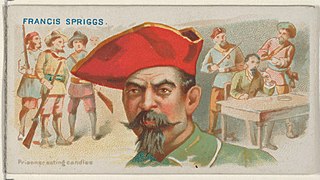 W
WFrancis Spriggs was a British pirate who, associated with George Lowther and Edward Low, was active in the Caribbean and the Bay of Honduras during the early 1720s.
 W
WCharles Vane was an English pirate who operated in the Bahamas during the end of the Golden Age of Piracy.
 W
WRichard Worley was a pirate who was active in the Caribbean Sea and the east coast of the American colonies during the early 18th century.